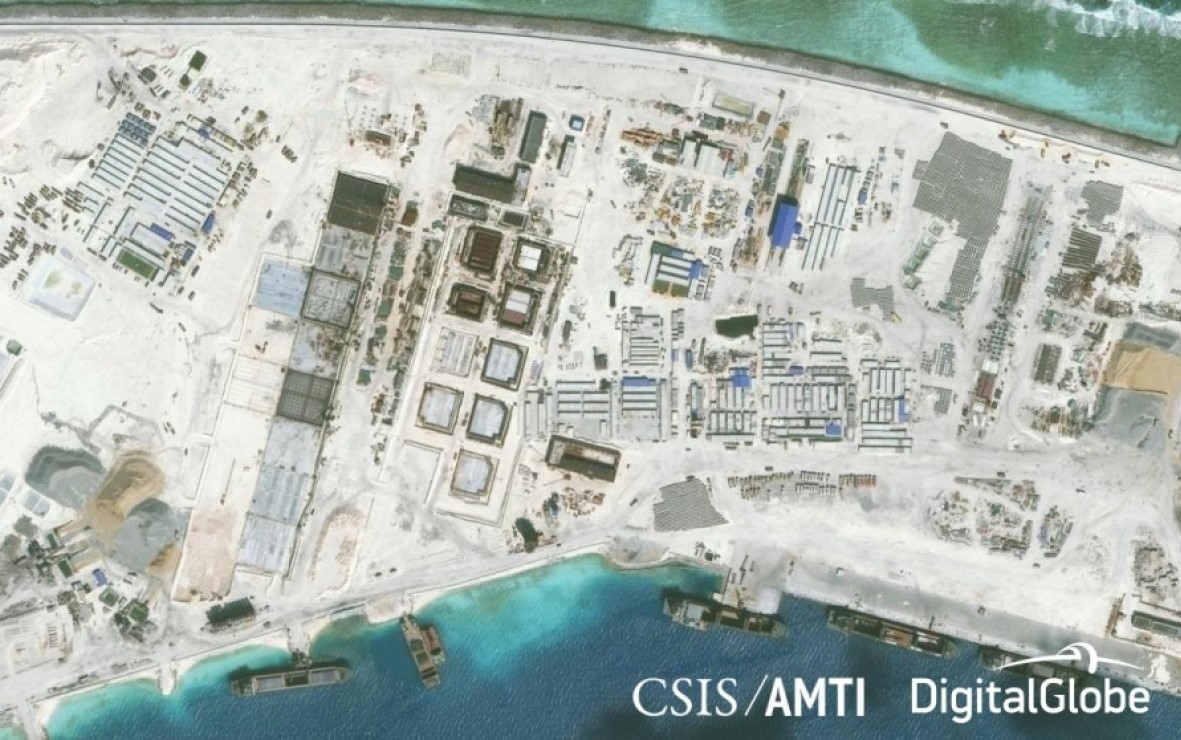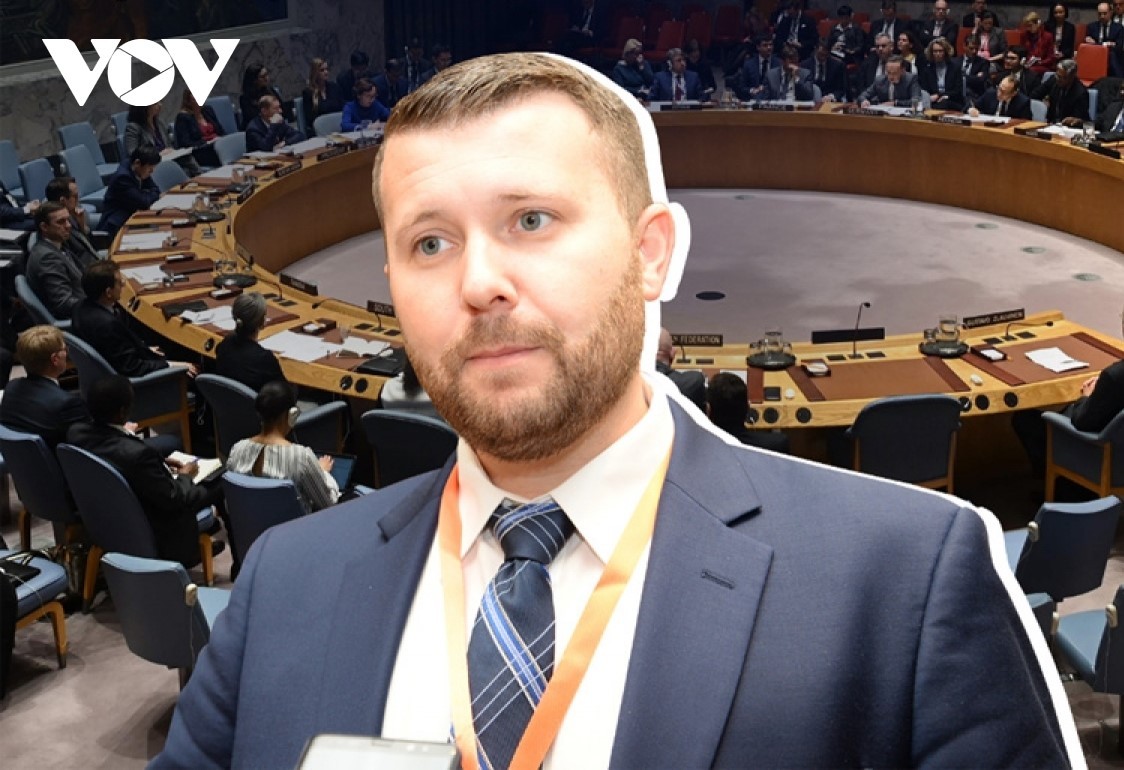
Code of Conduct in South China Sea – a question of time
Latest
 |
| China occupied the Mischief Reef in 1994 and has since illegally built major structures on it. (Photo: CSIS/AMTI) |
Code of Conduct as a matter of urgency
ASEAN Foreign Ministers, during the 25th ASEAN Ministerial Meeting in Manila in the Philippines on July 22, 1992, adopted the Declaration on the South China Sea, calling on concerned parties to settle disputes by peaceful measures and exercise self-restraint to avoid escalating the situation. They also requested that all concerned parties abide by the Treaty of Amity and Cooperation in Southeast Asia (TAC) as the basis for building a code of conduct in the region.
The ministers, during their meeting in Jakarta in Indonesia on July 21, 1996, endorsed the idea of creating a code of conduct in the South China Sea, laying the foundation for long-term stability which could be achieved in the region and gaining a clear understanding which could be promoted among claimant states.
The initiative was put forward one and a half years after China occupied the Mischief Reef in the Spratly Islands, territory which falls under Vietnamese sovereignty. It was unanimously approved by ASEAN leaders at their sixth regional summit held in Ha Noi in July, 1998. A draft document of the COC penned by the Philippines and Viet Nam was tabled for discussion in early 1999 and later granted approval by ASEAN for negotiation with China.
In early 2000, the two sides were set to get down to work on the initial negotiations of the draft COC. However, the Chinese side later changed their mind, putting impending negotiations on hold.
In an effort to break the deadlock and maintain peace and security in the South China Sea, ASEAN and China, at the eighth ASEAN Summit held in Cambodia in November, 2002, signed the Declaration on the Conduct of Parties in the South China Sea (DOC). The move was largely viewed as a temporary compromise measure, initially creating a favorable political environment for settling disputes, preventing conflicts, and ensuring peace and stability within the South China Sea.
However, in reality, China was becoming increasingly aggressive in demanding unreasonable claims in the South China Sea, ranging from claims to actions on the ground, causing frequent instability, and ramping up the potential risk of military conflict in regional waters. This showed that the DOC had little practical effect.
In this context, ASEAN leaders convened a summit in Indonesia in November, 2021, where they agreed to hold internal consultations on the COC and decided to establish a working group within the framework of the ASEAN Senior Officials’ Meeting (SOM) aimed at discussing and developing the main contents of the agreement.
COC negotiations – no real progress made over years
In September, 2012, on the sidelines of the UN Security Council session, Indonesia actively submitted a draft COC document and received full support from the majority of participating countries. Two months later, at the ASEAN-China Summit in Cambodia, ASEAN leaders requested that China announce its decision to kick-start the COC negotiation process.
In response, the regional powerhouse sent a representative to participate and expressed its willingness to consult with the bloc on the document. However, the Chinese side later refused to sit at the negotiating table, stating that the timing was not right.
According to Ian Storey, a senior fellow at the ISEAS-Yusof Ishak Institute in Singapore, all parties committed to negotiating with the COC when they signed the DOC in 2002. Despite this, negotiations were not held until 2014 due to subsequent delays by the Chinese side.
In addition, they did not take the process seriously until the International Court of Arbitration ruled in a 2016 lawsuit initiated by the Philippines that Beijing’s claims to “historical rights” in the so-called “9-dash line”, covering 80% of the South China Sea, were null and void.
By showing greater enthusiasm for the COC process, China was said to have diverted attention from its compliance with the 2016 ruling and reinforced the narrative that it and the bloc were actively managing the dispute without engagement from other countries, especially the United States.
The following three years subsequently saw China and ASEAN achieve three important milestones.
In August, 2017, the parties agreed on a one-page framework to guide future discussions. A year later, they adopted a 19-page Single Draft COC Negotiating Text (SDNT) which contained submissions by each of the 11 parties in which the COC should be taken into account. In August, 2019, the parties submitted the first draft to consolidate the SDNT and supplement new proposals.
They were set to begin negotiations on the second draft, but no meetings were held throughout 2020 due to the emergence of the SARS-CoV-2 virus. Following this, August, 2021, saw the Chinese Foreign Minister reveal that an agreement had been reached on the preamble of the Code.
Unlike what had happened on the negotiating table, in the field, China had constantly made moves aimed at asserting its unreasonable sovereignty claim over almost the entirety of the South China Sea. There was little sign of long-term stability which could be achieved in regional waters, with the “understanding” among states with claims in the South China Sea becoming fragile.
The Chinese side stated that it and the bloc were in the process of actively promoting consultations on the COC ‘with great progress’, but this view seemed not to be shared by all ASEAN member states.
 |
| Gregory Poling, director of the Asia Maritime Transparency Initiative (AMTI) at the Washington-based Center for Strategic and International Studies (CSIS). |
In an interview granted to VOV.VN, Gregory Poling, director of the Asia Maritime Transparency Initiative (AMTI) at the Washington-based Center for Strategic and International Studies (CSIS), said Chinese officials started talking about the prospect of a COC quickly taking shape in 2017. This was done as a way of deflecting criticism and redirecting public opinion about their failure in the Philippine lawsuit in 2016.
Since then, there has been no marked change, as well as no necessary compromise to actually complete the COC negotiations. The progress of negotiations over the past five years is nothing more than a reiteration of what ASEAN agreed with each other 20 years ago in the Declaration on the Conduct of Parties in the South China Sea DOC.









